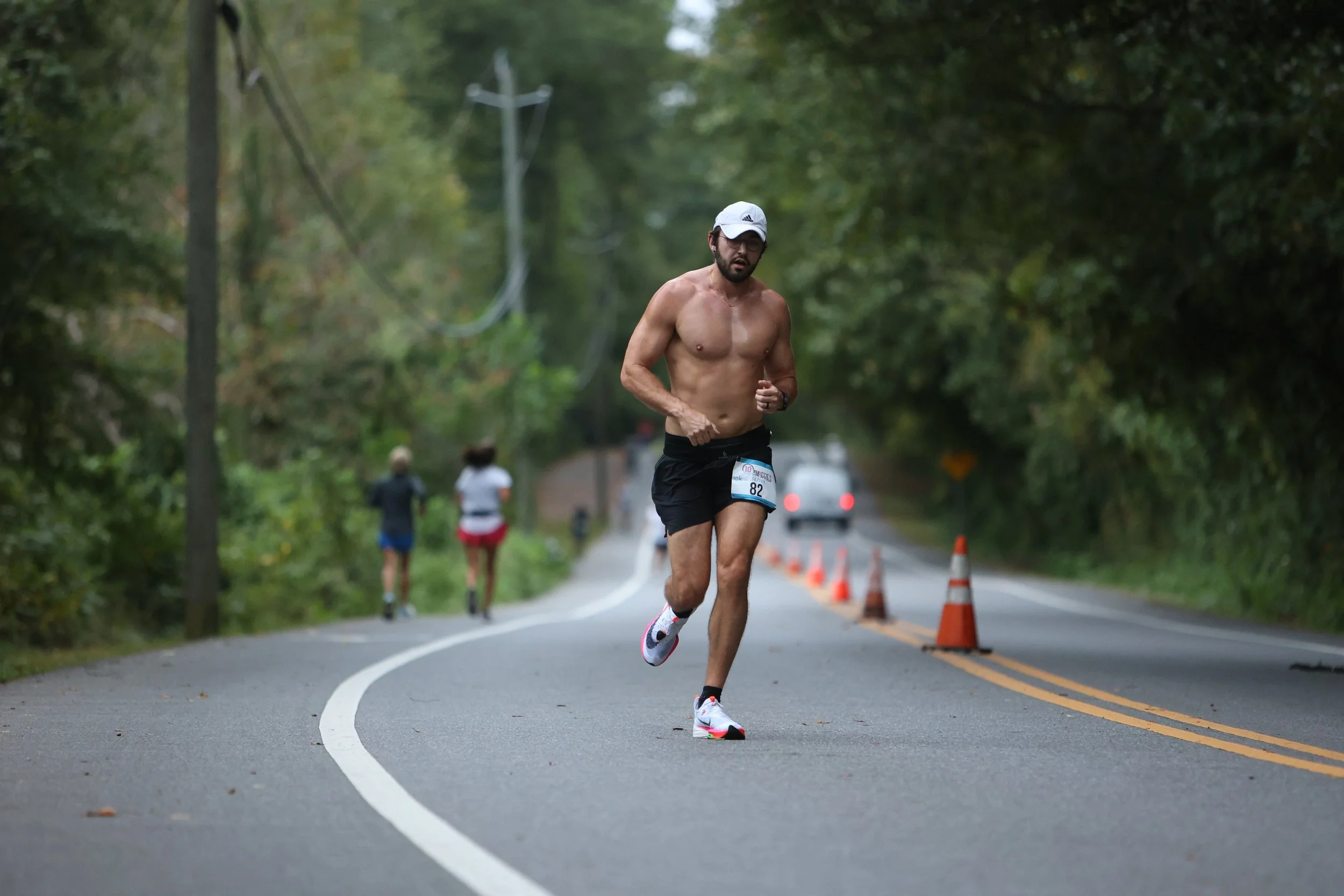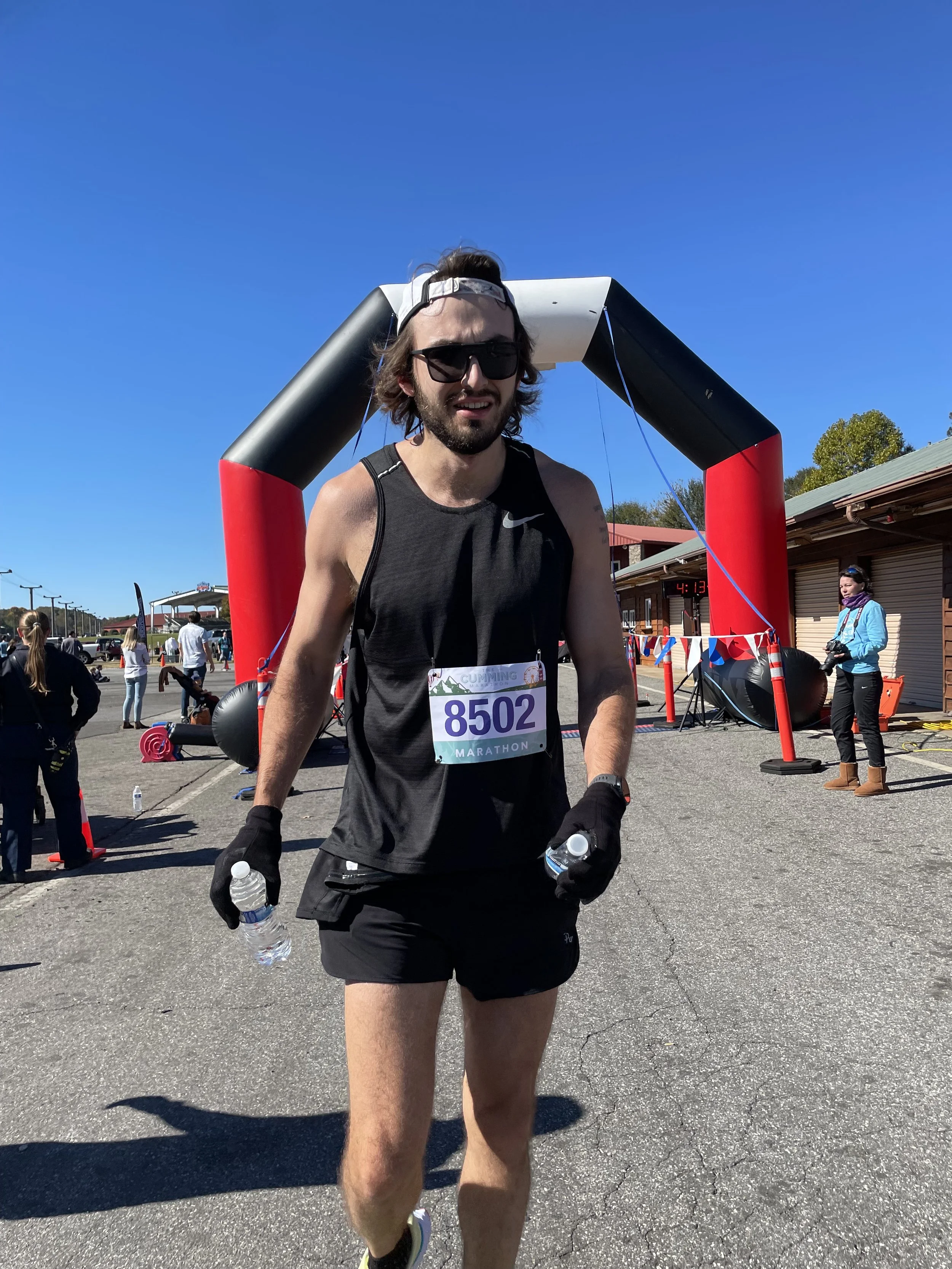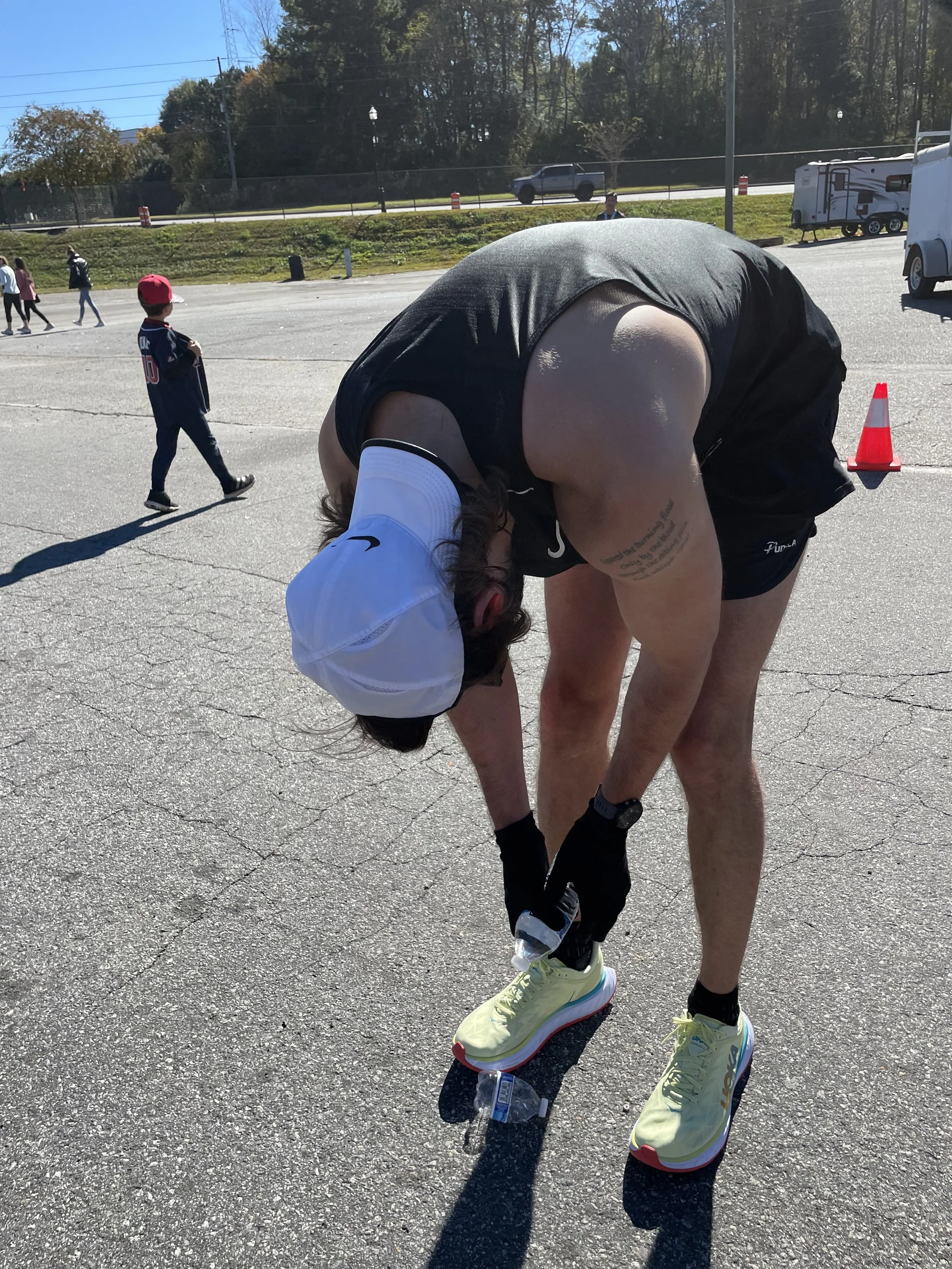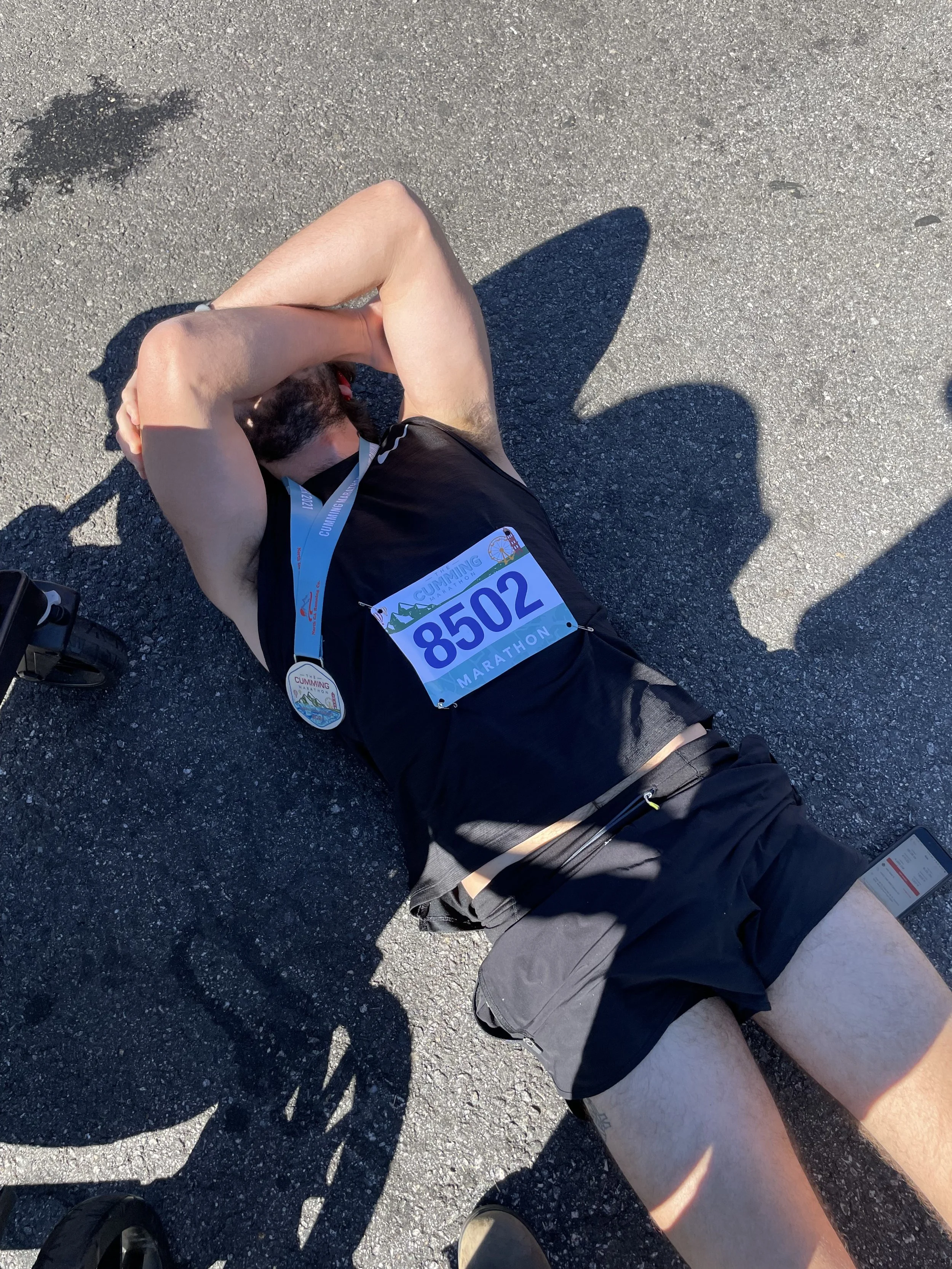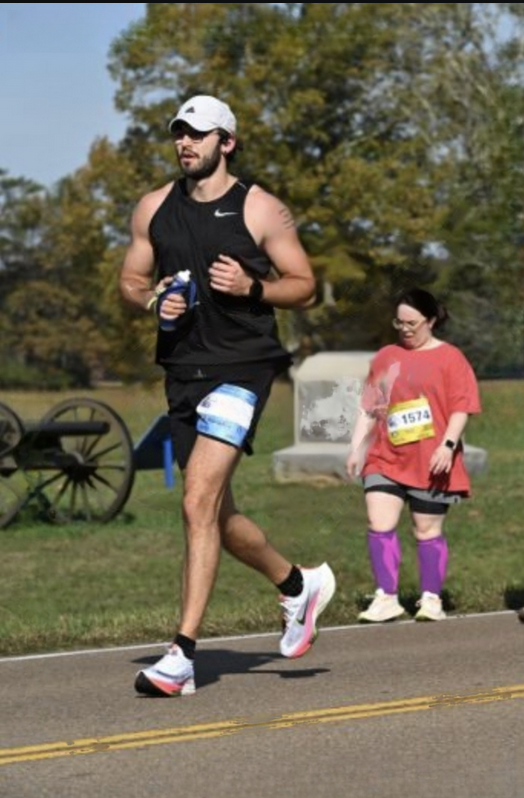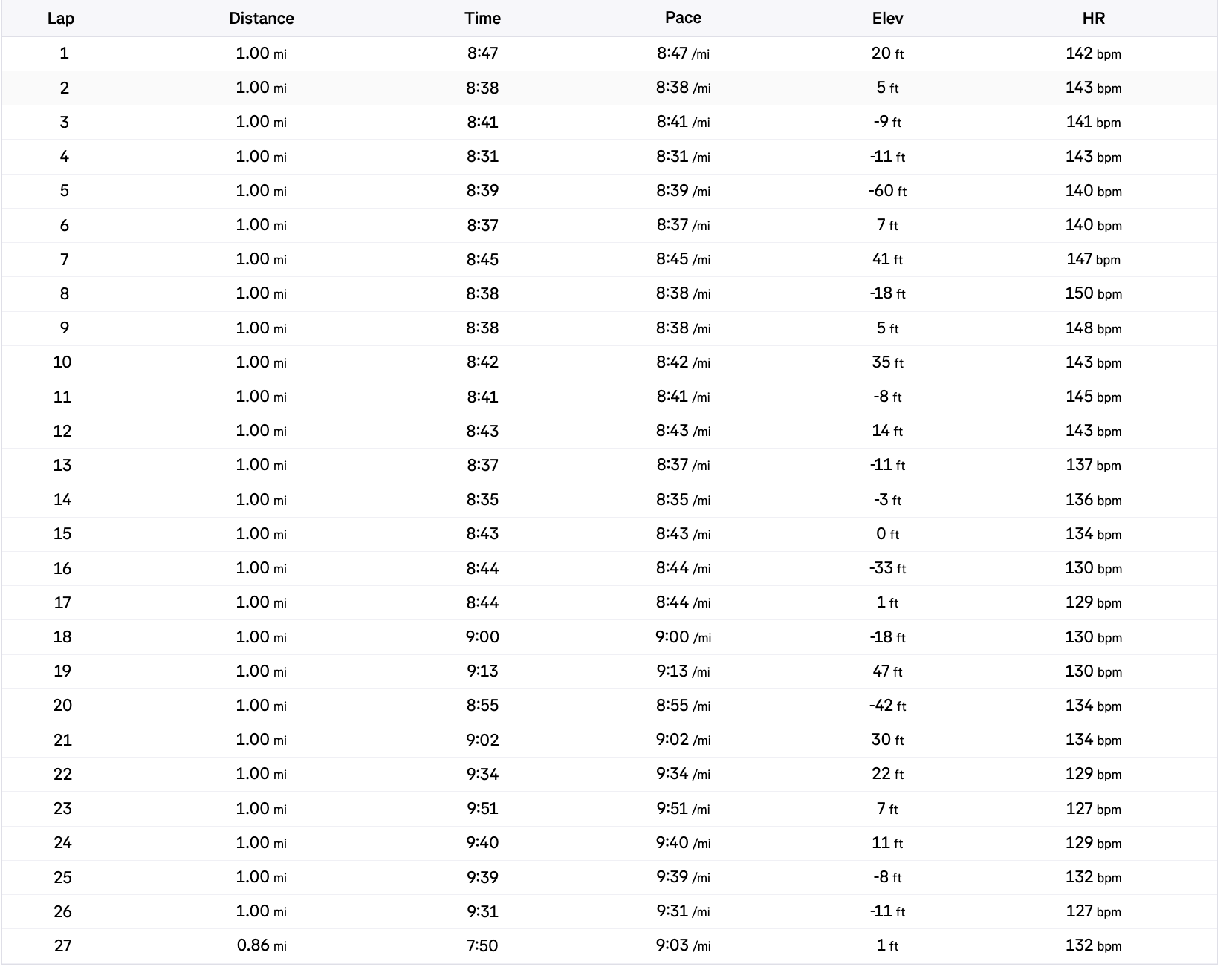Chasing Time: The Long Road to a Sub-Four Hour Marathon
1,097 days after running my first marathon on November 7, 2021, I finally achieved my long-standing goal of completing a sub-four-hour marathon on November 9, 2024. For nearly three years, since crossing the finish line of that first official marathon, this goal has been on my mind every single day.
Back in 2021, I finished my debut marathon with a time of 4:12:45 on a hilly course, making all the classic first-timer mistakes you could imagine. At the time, I thought a quick training block was all I needed to break the four-hour barrier in my next race. As it turns out, I couldn’t have been more wrong.
Over the past three years, through countless training sessions, failures, triumphs, and even breaks from running, I’ve gained far more than I ever would have if I’d succeeded on my first attempt in February 2022.
Throughout 2022, I made two attempts at breaking the sub-4 marathon barrier. I was in great shape for both races, and if not for a few key mistakes and some bad luck, I believe I could have done it.
The first attempt was at Skidaway Island in February 2022. For some reason, I ate way too much beforehand and ended up barfing around mile 17. Until that point, I was on pace and having a great race. Then suddenly—nothing. My stomach seized up, cramping so badly that I could barely walk. I ended up leaving the race to make it back to the hotel in time to shower before checkout.
The second attempt was that fall at the Boston Bound Marathon. This time, I was in phenomenal shape. I was targeting a 3:40 finish, and based on several 20-plus-mile training runs, it seemed well within reach. But, of course, a few days before the race, I started feeling off. I chalked it up to the usual tapering sickness and hoped I’d feel fine on race day—and for a while, I did. But then, around mile 18, my breathing got erratic, and I couldn’t stabilize my heart rate. I stumbled through the final eight miles and finished with a disappointing 4:30.
That race hurt—physically and emotionally. I was crushed. So, I decided to take a detour from running and focus on something else for a while. I started bulking, which turned out to be a ton of fun. I got strong enough to join the 1,000-pound club and enjoyed a well-needed break from serious running.
Fast forward to 2024, and I was done pouting—ready to chase my goals again. I started slow, building up my weekly miles from literally zero, just focusing on getting a few miles in each day. A gradual ramp-up from the bottom was crucial for staying injury-free as a mere mortal. By summer, things really started to click. Long runs and speed sessions became the norm, and though I initially planned to target a race in January 2025, a few strong long runs in September had me itching to try something sooner. So, I decided to take a shot at a local race in November.
That’s how I ended up signing up for the Chickamauga Marathon. The course seemed fun, though it had a bit more elevation than I would have liked—about 950 feet of gain. Still, I wanted to give the distance a try before my best chance at a sub-4 marathon in January on a flatter course.
Training leading up to the race was solid. I wasn’t anywhere near the 70-mile-a-week peaks I hit back in 2022, but I managed a few 20-plus-mile long runs at race pace. Those long runs are my key to moderate success at longer distances. The rest of my weeks were filled with four-mile runs every other day, one speed session, and strength training five days a week, making sure I left it all out there on long-run days.
I had also dialed in my race nutrition, consuming much less than I typically used for long runs. My main focus, though, was staying healthy. The hilarious twist? A week before the race, we welcomed a foster child into our home, and he came sick as a dog. Naturally, the whole family caught it. I was in full-on panic mode, loading up on vitamins and soaking in apple cider vinegar-infused baths all week. Thankfully, the worst of it hit me after the race—but let’s just say I was walking a thin line leading up to the big day.
Race Day
On race day, I woke up at 3 a.m. to make the two-hour drive to the event, feeling ready to go. You never sleep well the night before a race, and the early morning start made the fatigue feel worse than it probably was.
The race started off really well. I felt great through the first 10 miles—no issues at all. The next 8 miles went smoothly too. But, as often happens in a marathon, something eventually changed that I had to react to. This time, it was quad cramping. I’d never experienced bad quad cramps during a long run before, so I wasn’t sure what to do. I decided to adjust my stride to avoid kicking my legs back as much as usual and started taking more salt tabs to manage it.
The tough part was that the cramping never improved—it just spread to both legs, hitting my hammys and calves. By mile 20, I was on fire. I couldn’t stretch out like I could earlier, and my pace completely crumbled. My heart rate dropped, not because my aerobic capacity was lacking, but because the muscle failure was destroying me. The last six miles of the race were a blur. I remember not being able to lift my legs, with every step feeling like pins shooting through my muscle fibers. At some point, I went into full meme Goggins mode, yelling at myself. I was so angry—so close to my goal, yet potentially about to fall short.
To make matters worse, my foot pod was reading the distance slightly faster than the course was mapped, which meant I wasn’t as far ahead of my goal pace as I thought. The gun time read 3:59:40. I had stopped twice to stretch out my calves, and I can’t believe I was just one more stop away from missing my goal by a razor-thin margin.
There are moments in the middle of a struggle when you come to grips with the reality that your goal might slip away. I felt that in both of my failed attempts in 2022—staring at my watch as the clock ticked past four hours, knowing the countless hours and months I had poured into training, only to fall short.
Two years later, as my legs locked up with six miles to go, I began praying—for strength to push through the pain and for the ability to achieve my goal. In that moment of pleading, I was also deeply aware that success or failure wasn’t the end. I felt thankful for the opportunity to train, for the chance to race, and for the journey itself.
As I stumbled across the finish line and collapsed into a stranger to collect my medal, tears flowed—tears of pain and victory. That lingering chip on my shoulder finally came off. This was a goal I had wanted to achieve for years, and I couldn’t be happier to have accomplished it despite all the adversity.

